UC Gardening Blogs
Solano County's Own Gold Rush II
This is the follow-up to the “cliff hanger” of my previous blog! You may recall I wrote about Solano County's own “Gold Rush”. Now we'll see how the famous and sought-after “Early Fruit” of our county made it across the country—and what has happened to this thriving orchard industry today.
Between 1845 and 1910, because of Solano County's combination of warmer temperatures, heavy rainfall along the hills, and mountains that provided shelter from west winds, our county was known for the production of the earliest deciduous fruit in the United States. With the advent of refrigerated railcars in the 1880s, for the first time, fruit shipments could easily reach the East Coast markets. By the 1890s, the “Early Fruit District” of Vacaville had become famous for the first fruit of each season. In 1895, cherries from Cherry Glen were sold as early as March on the East Coast! Newspapers carefully noted the earliest date of each new crop.
Solano County orchards were also famous for stronger flavors. Without irrigation, the sugar became more concentrated in smaller fruits than had that intense flavor. Soon it was discovered that this trait was also ideal for making dried fruit.
With all the excitement about this mini “Gold Rush” of fruit, a promotional book, California Illustrated no.1, published. It described the Vacaville orchard district with hand-colored illustrations taken from photographs by WR Nutting. The book was a form of advertising, meant to encourage farmers to buy land near Vacaville by showing beautiful orchard scenes along with lavish Victorian homes.
As a side note, these very photographs will be featured in the upcoming exhibition at the Vacaville Museum: Center for Solano County History opening April 6th. In addition to the exquisite images, the show will feature an authentic fruit wagon, a packing and cutting shed, a kid-size packing shed for interactive activities, and contemporary photographs taken especially for the exhibit and shot from the very spots where the original Nutting images were taken!
From 1920-1940, there were many changes in the fruit industry. The San Joaquin Valley farmers began irrigating their trees which resulted in larger fruit and higher yields…the competition had arrived. The Depression forced fresh fruit to be considered a luxury that folks couldn't afford. And, there were orchard problems such as soil erosion in older orchards as well as disease in cherries that added to the industry's decline. So much so, that between 1925 and 1939, local fruit shipments dropped by 90 percent. The “golden years” of the fruit industry were over. Most who stayed in business sold their crops for dried fruit or to canneries.
However, during WWII, difficult times turned to good times once again. Dried fruit was needed for the U.S. troops. In 1958, the Monticello Dan was finished to supply water and the Solano Irrigation District was established. Through a series of canals finished in 1962, farmers could now have year-round water instead of waiting for rainfall for their crops. At this point, the County farmers had a much better chance to produce competitive crops. Today, more nut crops like walnuts and almonds are grown in Solano County and some still sell fruit to dry yards. Organic fresh fruit is also popular. Though much former orchard land has been developed, farming is still thriving in Solano County. Agricultural jobs make up 8% of Solano County jobs today—and we all love going to our local orchards, fields and farmers markets to partake of the wonderful bounty.
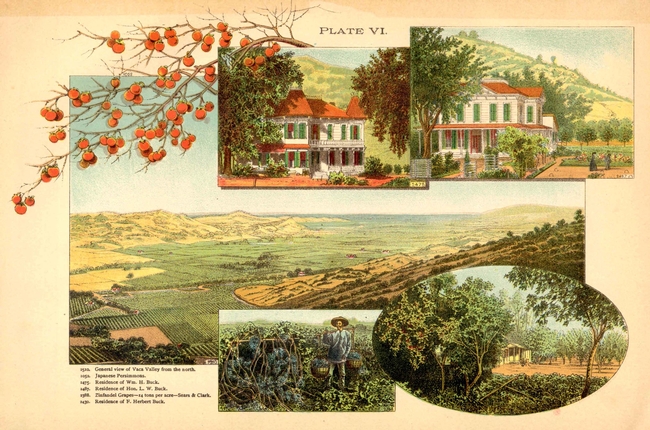
2005005007
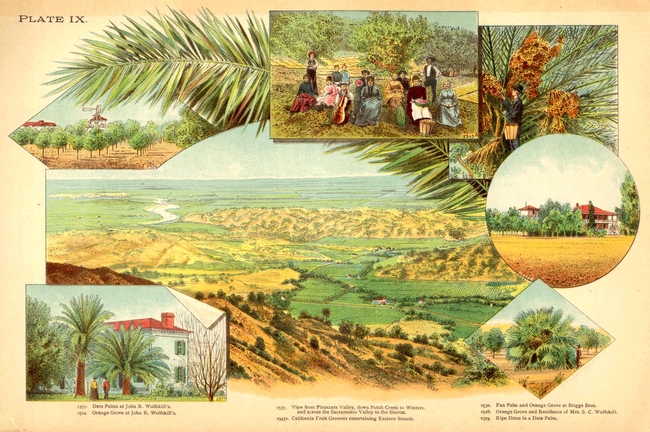
2005005010
Can't Cut the Mustard? Not Honey Bees!
The phrase "can't cut the mustard" (not able to handle the job) doesn't apply to honey bees. It's...
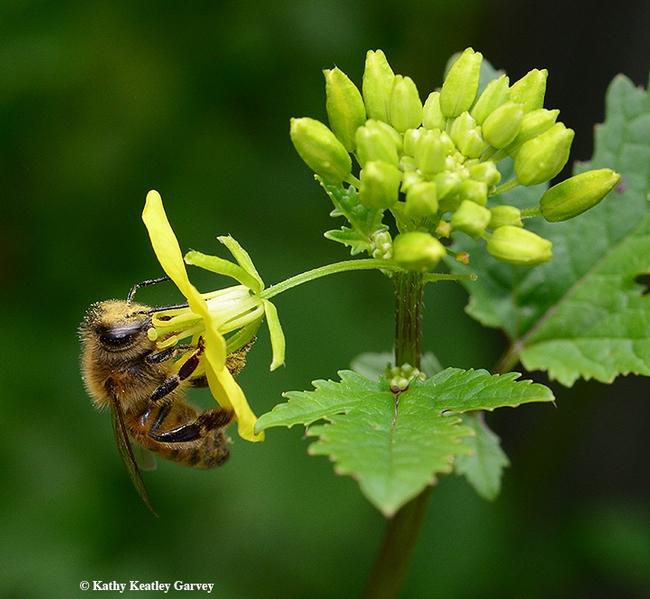
A pollen-laden honey bee nectaring a mustard blossom in Vacaville, Calif. this week: in between the rains! (Photo by Kathy Keatley Garvey)
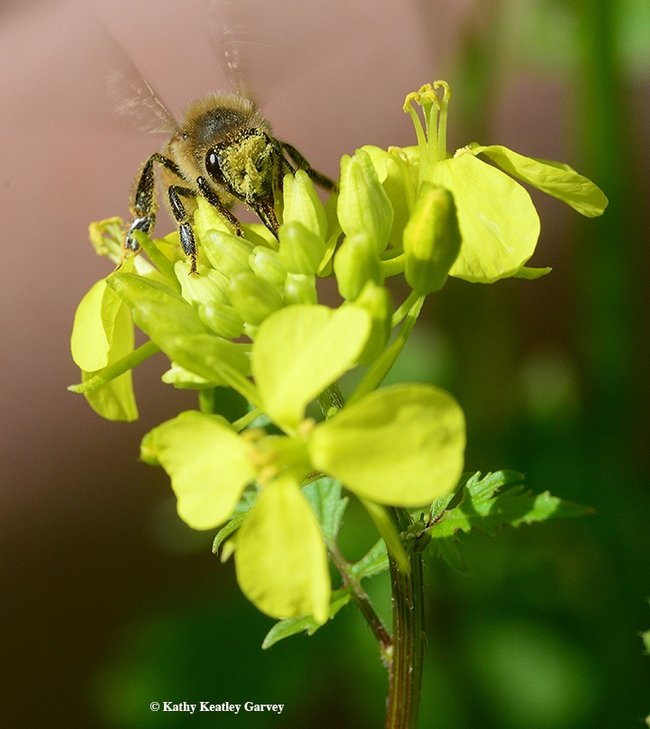
Mustard pollen is to a bee what a milk mustache is to a kid. (Photo by Kathy Keatley Garvey)
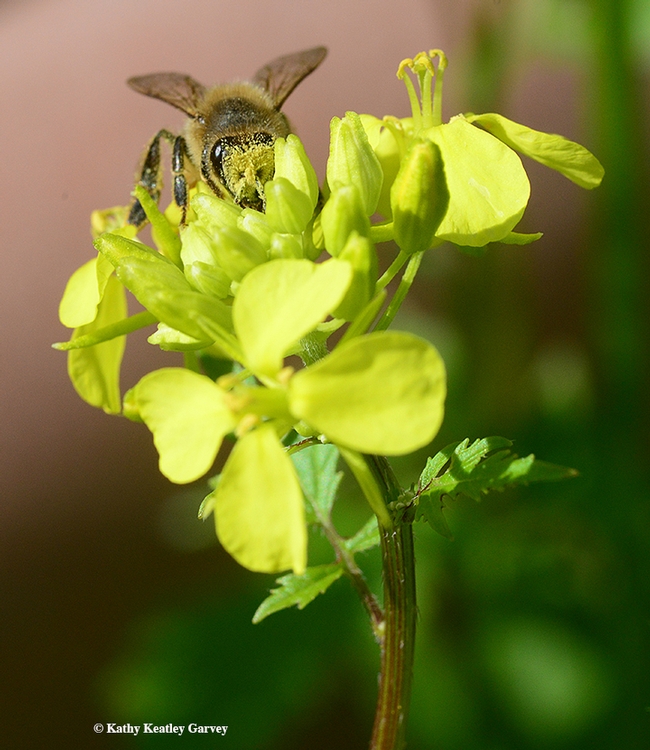
The bee is grabbing both pollen and nectar from a mustard blossom. (Photo by Kathy Keatley Garvey)
Reblooming Amaryllis
I love growing amaryllis bulbs (Hippeastrum genus) for a splash of indoor color to brighten a grey winter day or to give as a holiday gift. The plants are easy to grow, grow astonishingly fast each day once they are established, require no special treatment to flower the first time, and have spectacular blooms. The hardest part of growing amaryllis may be choosing a color!
While many people throw away the bulbs once they are done blooming, amaryllis may bloom again the following year with proper care. In sum, once the amaryllis is done flowering, it continues to require the basics – sunlight, water, and fertilizer – and then a period of dormancy.
Remove each flower as it fades. Once the amaryllis finishes blooming completely, cut the flower stalk. Move the plant to a brightly lit location and continue to water and fertilize the plant regularly through the spring and summer. You may keep the amaryllis as an indoor plant during this growing time or place it outside after the danger of frost has passed in the spring.
Begin preparing your amaryllis for dormancy about eight to ten weeks before you'd like it to start growing again. Move it to a cool location. Ideally, the plant should be stored in temperatures around 40 to 55 degrees Fahrenheit, but since those temperatures can be difficult to achieve in Solano County in the fall, just do your best. Although the conditions may not be ideal, I've had success reblooming amaryllis by leaving it in a shady side yard.
Gradually reduce watering over two weeks to dry out the soil. Remove the foliage once it has died. Do not feed or water the plant during this resting period. If you have left the bulb outside, make sure that it is located in a dry area so that it doesn't receive winter rains.
Check the amaryllis weekly during its dormancy period. The tip of a new flower stalk should appear in the center of the bulb after eight to ten weeks. Repot the plant with fresh soil, move it back to a sunny location, and begin watering it to start the blooming process over again.
In time, small bulblets may develop beside the primary amaryllis bulb. The bulblets may be separated from the large bulb and repotted to bloom in a few years, or they may be left attached and allowed to grow to full size along with the original bulb.
With this simple care, the amaryllis will bloom and brighten your home for years to come!
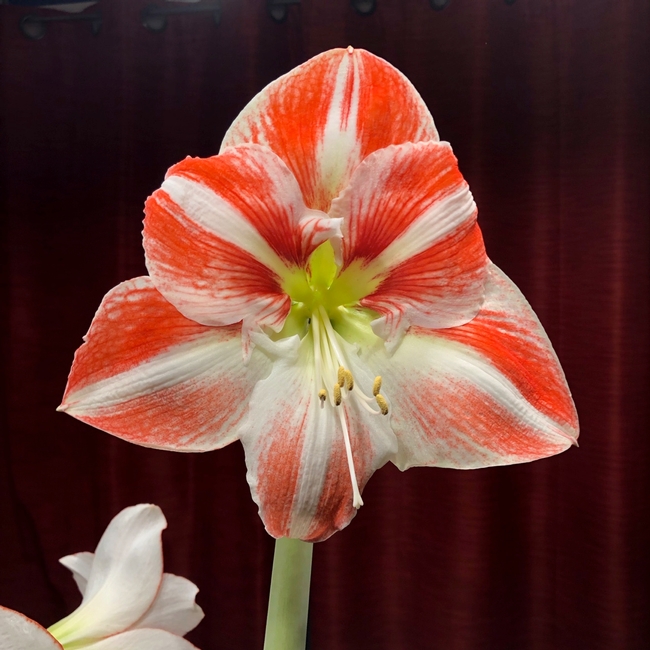
photos by Erin Mahaney
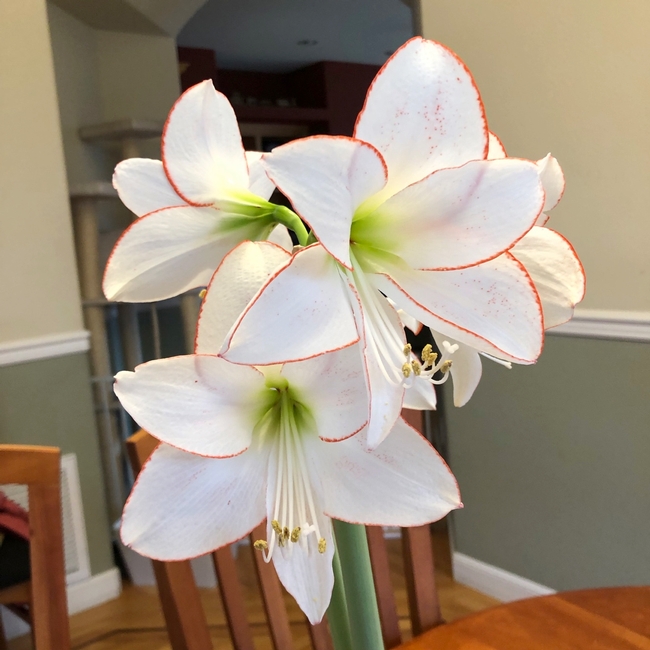
IMG 8983
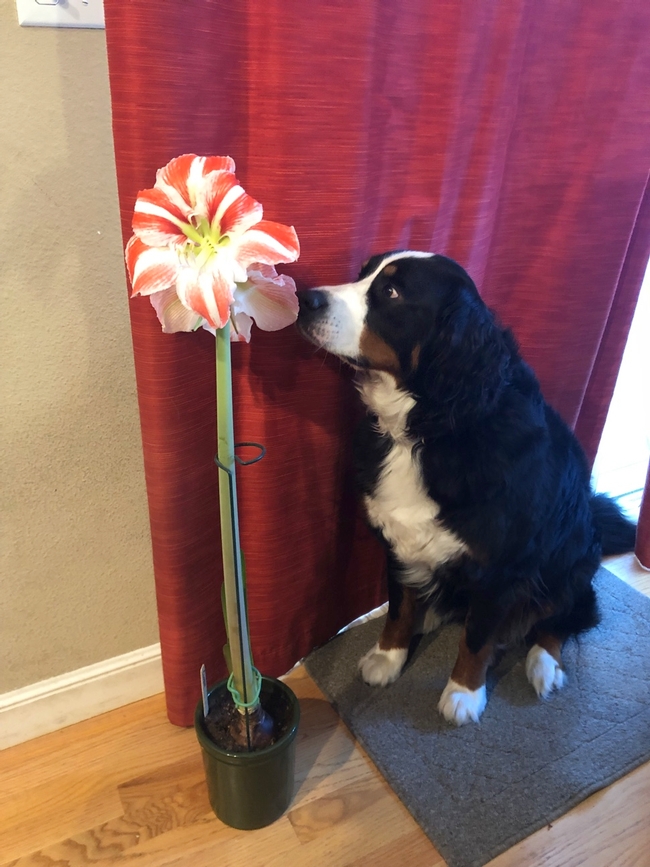
IMG 5666
UC Davis Spring Seminars: from Fruit Flies to Ants to Spider Glue and More!
Medical entomologist Geoffrey Attardo, assistant professor of entomology, UC Davis Department of...
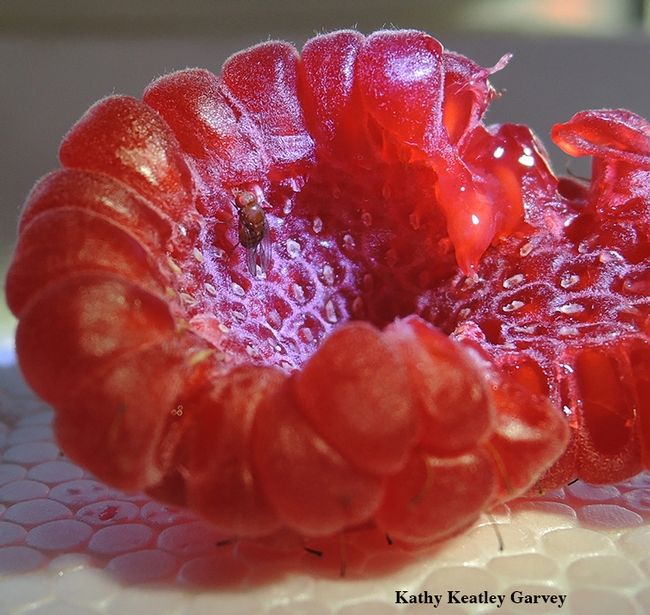
A fruit fly, spotted wing drosophila, on a raspberry. The UC Davis Department of Entomology and Nematology's first spring seminar is on fruit flies. Alistair McGregor of Oxford Brookes University, England, will speak. (Photo by Kathy Keatley Garvey)
A Tale of Three Narcissus
Narcissus are problematic in my Suisun City garden. Some naturalize well but others fizzle after a first season of bloom, producing only leaves until I find the time and energy to dig them out. On October 3 last year “Bill the Bulb Baron” (William Welch)[1] presented an assortment of his Santa Cruz bulbs to Master Gardeners at the Woodland UCCE auditorium. I was dazzled! My garden is devoted to flowers, preferably fragrant ones. His wares included many varieties of fragrant tazetta-type Narcissus. I could not resist taking the plunge with three, and planted them all in locations that get plenty of winter sun.
Always enchanted by discovering perfumed Narcissus tazetta--Chinese sacred lilies--still gracing the sites of vanished Gold Rush homes, I decided to give them a second chance. Several years ago, bulbs that bloom profusely year after year for my sister-in-law in Santa Barbara gave me a few flowers the first year, then—the leaves. I thought that I may have failed because I watered that ground in summer, whereas Bill emphasized that these heirloom Narcissus thrive on summer's baking drought. Well…this time, after planting the bulbs immediately after purchase I got leaves but NO flowers. My new theory is that Suisun City simply does not get enough winter cold for this Narcissus variety.
In contrast, N. tazetta ‘Lemon Cups' are performing beautifully—the clear winner in this tale. Also planted right after purchase in early October, they started blooming in mid-February. Each 17-inch stem has five 2-inch diameter florets with a sweet citrus-y perfume.
Early October is an OK time to plant bulbs; the end of November not so much. I think that not finding the time to plant N. tazetta ‘Golden Dawn' until after Thanksgiving ruined my chances of success. All six bulbs put up scraggly leaves by mid-February but only one bloomed, with two 1 3/4-inch florets on a weak, nodding 12-inch stalk. Those flowers are lovely: clear yellow petals around an orange center fading to apricot at the frilled edge. Their fragrance is fabulous. I missed the boat by not treating those poor bulbs better.
Here's hoping that ‘Golden Dawn' recovers and that they and ‘Lemon Cups' both bloom well next year--the true proof of Narcissus success in my garden. As for the Chinese sacred lilies, my cousin in Grass Valley, a Nevada County Gold Rush town, wants the bulbs after I dig them out. I bet they will do well for her.
Three photos taken by Patricia Matteson:
- Bloomless N. tazetta (Chinese sacred lily)
- N. tazetta ‘Lemon Cups'
- N. tazetta ‘Golden Dawn'
[1] http://www.billthebulbbaron.com/
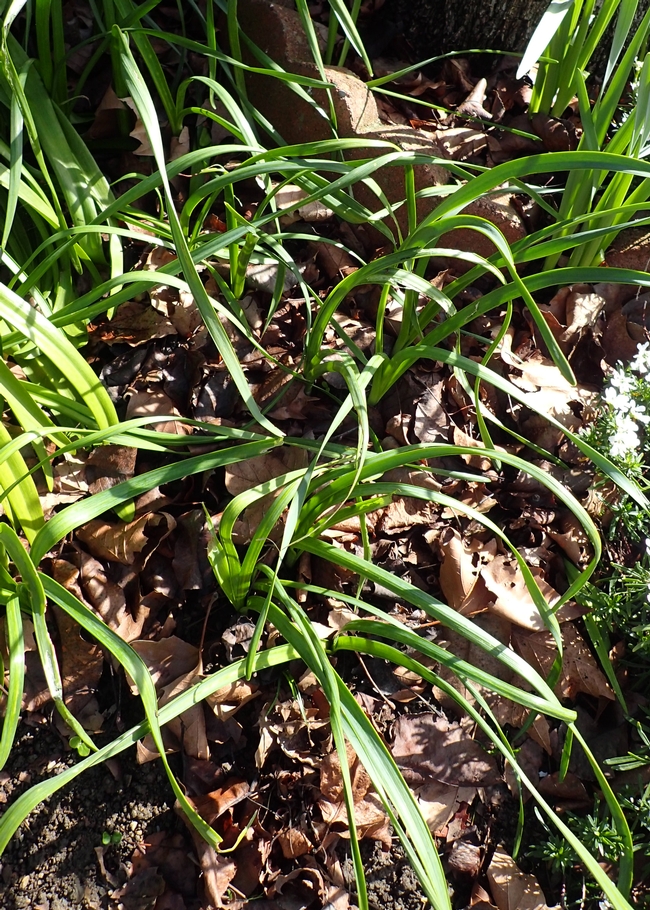
Bloomless N tazetta - Chinese sacred lily
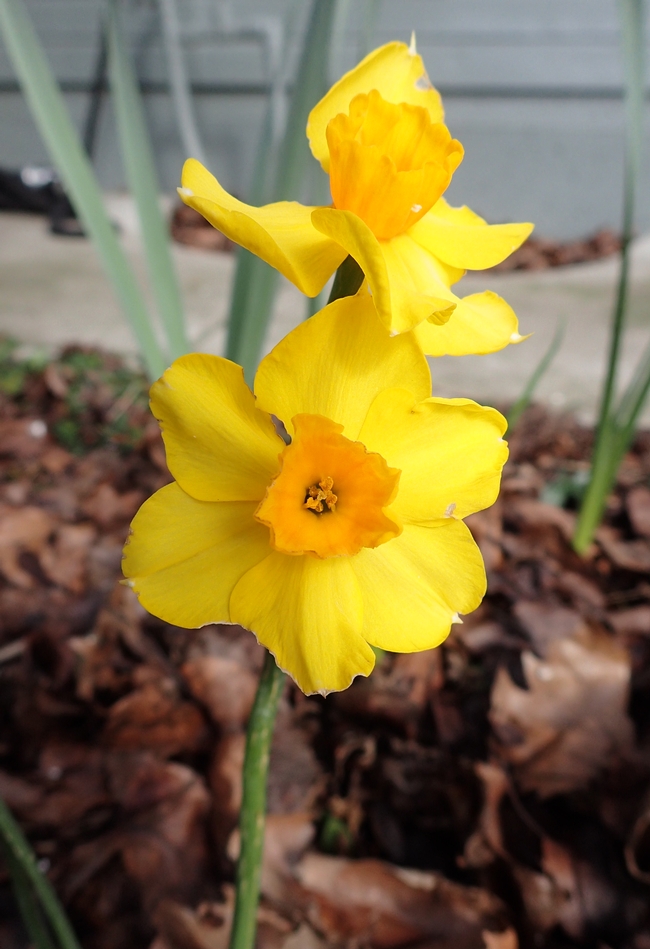
Narcissus tazetta Golden Dawn
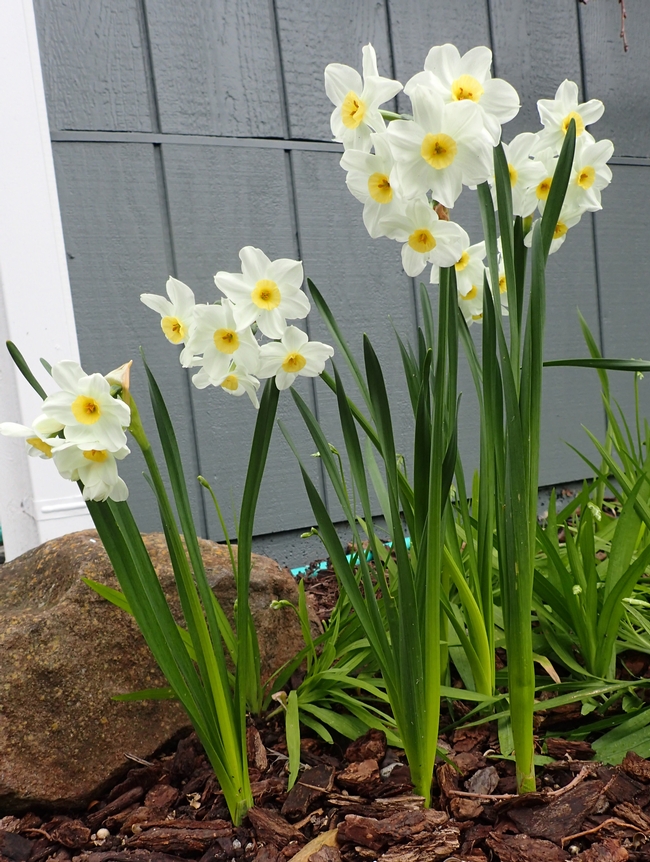
Narcissus tazetta Lemon Cups



